We’ve taken four of the most popular mid-sized SUVs in Australia and compared them back-to-back. They are the Hyundai Tucson Highlander N Line, Kia Sportage GT-Line, Mitsubishi Outlander Exceed and the Subaru Forester 2.5i-S. And I'm betting there are two that wouldn’t make you completely happy.
Which ones? Well, you’ll know after you read this comparison review, which judges them on their value, safety, design, practicality, engines, fuel efficiency, servicing costs and warranty, plus what they’re like to drive.
See, despite being rivals and about the same size, they are different, in some cases very much so. Different in price, and how they drive and the space they offer inside… and that’s just for starters.
Does it represent good value for the price? What features does it come with?
Out of the four SUVs here the Forester 2.5i-S will cost you the least at $44,190, then the Outlander Exceed comes in at $47,990, followed by the Sportage GT-Line at $49,370 and then the Tucson Highlander N Line with its list price of $51,000.
All sit at the top of their respective ranges. Well, there is a grade above the Exceed in the Outlander line-up called the Exceed Tourer, but the only extra it offers is a dual-tone colour exterior and interior.
This price variation between the SUVs on test is a great example of how a car's higher cost doesn’t always mean you get more.
.jpg)
See, all these SUVs come with sat nav, a proximity key and push-button start, privacy glass, a power tailgate, sunroof, roof rails, LED headlights and running lights, plus Apple Car Play and Android Auto.
The Outlander has three-zone climate control, while the rest have dual-zone. The Outlander has the largest wheels – they’re 20-inch alloys, while the Forester has the smallest at 18 inches and the Sportage and Tucson both have 19-inch rims.
All have leather upholstery and heated front seats, but only the Sportage and Tucson have ventilated front seats, too.
The Forester and the Tucson both have an eight-speaker Harman Kardon stereo, the Sportage and Outlander have Bose sound systems – eight speakers in the Kia and 10 in the Mitsubishi.
Really, the big differences in features comes down to the cabin tech such as the size of the media displays.
The Forester has the smallest screens – there’s an 8.0-inch media display and a 6.3-inch display for car information.
The Sportage has the most impressive display with two 12.3-inch screens which are joined and curve around the driver housing the media and instrument cluster.
The Tucson has two separate 10.25-inch screens, one for media and the other for the driving instruments.
The Outlander has three screens – a 9.0-inch media display, a 12.3-inch digital instrument cluster and a 10.8-inch head-up display.
Sure, the Forester has a small screen and a traditional analogue instrument cluster but that’s because it’s the oldest car here.
This fifth-generation Forester arrived in 2018, and while there have been updates to it since then, the Sportage and Outlander came out in 2021, and the Tucson was released in 2020.
Despite the tech being a bit behind, the Forester represents the best value for money.
Forester | Outlander | Sportage | Tucson | |
Price | $44,190 | $47,990 | $49,370 | $51,000 |
Seat upholstery | Leather | Leather | Leather | Leather |
Climate control | Dual zone | Three zone | Dual-zone | Dual-zone |
Heated seats | Front | front | Front | Front |
Ventilated seats | No | No | Front | Front |
Multimedia screen | Eight-inch | Nine-inch | 12.3-inch screen | 10.25-inch screen |
Digital instruments | no | 12.3-inch | 12.3-inch | 10.25-inch |
Head up display | no | 10.8-inch | No | No |
Apple CarPlay/Android Auto | Yes | Yes (wireless) | Yes | Yes |
Stereo | Harmon Kardon eight-speaker | Bose 10-speaker | Harmon Kardon eight-speaker | Bose eight-speaker |
Built-in sat nav | Yes | Yes | Yes | Yes |
Keyless entry and push-start | yes | yes | Yes | Yes |
Power tailgate | yes | yes | Yes – gesture function | Yes – gesture function |
Headlights | LED | LED | LED | LED (adaptive) |
Wheel size | 18-inch | 20-inch | 19-inch alloy | 19-inch |
Privacy glass | Yes | Yes | Yes | Yes |
Sunroof | Yes | Yes | Yes | Yes |
Forester | Outlander | Sportage | Tucson | |
9 | 8 | 7 | 7 |
Is there anything interesting about its design?
The Forester is an adventurous looking SUV and like every Forester leading up to this one, from behind it's shaped like a piece of Toblerone with a tall but triangular stature.
Giant windows, big headlights, chunky roof rails and rugged-looking cladding are all part of the sensible, practical styling of the Forester. It’s the hiking boot of mid-sized SUVs, seemingly built to offer comfort while adventuring.
The Forester’s cabin design has a functional focus, but it’s an almost obsessive-compulsive disorder-type of focus, with the multitude of icons for safety systems on the screens and buttons.
The cabin is not an exercise in minimalism with its busy layout of controls, and materials of various textures.
They say good spies are people that don’t stand out, so if that’s the case the Forester would make an excellent undercover agent.
Sure, the Subaru is the most rugged looking but its appearance is nowhere near as striking as the Sportage in its styling and the Outlander and Tucson aren’t exactly boring, either.
The Sportage, Outlander and Tucson are all new generation models, though, and at the time I did this test had all debuted in Australia within the past 12 months. Yes, we live in an age where SUVs need a traffic-stopping face.
Just look at the Sportage’s expression. It’s confronting and alien and beautiful (I think?) all at once. Those arrow-like daytime running lights are like sideways fangs and it’s hard to even tell where the headlights are.
The Sportage’s profile is just as sharp and modern, and the rear is so perfectly unique and cool that I feel embarrassed for Aston Martin’s DBX SUV which should have had this level of style applied to its tailgate.
Yes, the Sportage combines cutting-edge cool looks with pleasing craftsmanship that extends all the way down to details like the texture of the wood trim on the dash, to the design and action of the door handles and air vents.
The Outlander now has a beefy upmarket look, right down to the Range Rover-style lettering across its bonnet edge.
The high-end styling continues inside, and the quilted leather interior makes a great first impression. But on closer inspection the fit and finish of the cabin doesn’t appear as good as the other SUVs here.
The Tucson is closely related to the Sportage with Kia and Hyundai having the same parent company, so it’s interesting to see each carmaker’s take on a mid-sized SUV.
The Tucson isn’t as avant garde in its styling, but it’s not without its own stunning and unique design elements. There’s the LED running light design integrated into the grille and the origami-like creases in its sheet metal.
Inside, the Tucson has a super-premium feeling cabin with the large touchscreen embedded in the centre console, but that prestige feel is let down by the dinky looking digital instrument cluster and ‘snazzy’ red highlights that come with the N-Line option pack fitted to this Tucson.
As for the dimensions the Tucson is the shortest in length at 4.63m end-to-end, the Outlander is the longest stretching 4.71m, the Forester is 4.64m and the Sportage is 4.66m.
The Sportage wins here for its stunning and original design, the attention to detail and the high-quality feel of the materials.
Forester | Outlander | Sportage | Tucson | |
7 | 8 | 9 | 8 |
How practical is the space inside?
The Sportage, Forester and Tucson have five seats, the Outlander has a third row with two extra seats for a total of seven.
Before you rush out and get the Outlander, though, please know the two seats in its third row don’t offer much room and I’m not just saying that because I’m tall at 191cm.
Even the smallest and most ninja-like of our testers on this comparison took one look at the legroom available and said, “no way.”
The second row slides forward to offer more room for the third row, but finding adequate legroom for me in both at the same time is impossible.
So, consider the Outlander’s third row seats for occasional use only. If you need seven seats all the time, check out something like the Hyundai Palisade or Kia Carnival.
The Outlander, despite its larger exterior dimensions, doesn't impress with its interior space. Yes, the third row is tight, but the second row also feels less roomy thanks to a high seating position which combined with the sunroof means headroom is less than adequate.
Legroom while fine for most isn’t good enough for me to sit comfortably behind my driving position.
Storage space in the Outlander is disappointing, too, and it also claims the award for smallest boot with the cargo capacity behind the second row (third row folded flat) being 478 litres.
The Sportage’s cabin is more spacious than the Outlander’s with good legroom for me behind my driving position and adequate headroom, too.
The smaller windows with high sills make the cabin feel dark and children may have difficulty seeing out.
The Sportage’s 543-litre boot is the largest of the lot on test and cabin storage is good, especially the large centre console storage area.
The Tucson’s cabin isn’t as spacious as the Sportage’s but it's better than the Outlander’s, with adequate legroom for me behind my driving position and passable headroom, too.
Storage is also good, while boot space is ample at 539 litres.
.jpg)
The winner for space and practicality is the Forester. While it doesn't have the largest boot at 498 litres, it offers a cavernous interior.
The tall roof means headroom is the best of the lot, and legroom is better than the rest, too, with me sitting behind my driving position.
Large, wide-opening doors mean access in and out is better than any of the other SUVs here, while enormous windows are not just good for visibility but let in gallons of natural light that's missing from the cabins of the Sportage and Tucson.
The Forester’s cabin feels like an open-air stadium compared to those of the Sportage, Tucson and Outlander.
All SUVs tested have door pockets, but the Forester’s are huge and so are the front ones in the Sportage. Each of the SUVs have rear privacy glass, but only the Outlander has pull-up sunshades for the second-row windows.
You can see the USB port and 12V outlet count in the table below, but I should point out only the Forester doesn't have wireless charging for phones. Still, it wins here overall for space and practicality.
Forester | Outlander | Sportage | Tucson | |
Boot space (all seats up) | 498L | 478L | 543L | 539L |
Cupholders | 4 | 4 | 4 | 4 |
USB ports | 4 | 4 | 4 | 4 |
12V outlets | 3 | 2 | 2 | 2 |
Wireless phone charging | No | Yes | Yes | Yes |
Forester | Outlander | Sportage | Tucson | |
9 | 7 | 8 | 8 |
What are the key stats for the engine and transmission?
The Forester 2.5i-S has a 2.5-litre four-cylinder engine and makes the most power of these SUVs with 136kW, while torque is a healthy 239Nm.
The transmission is a CVT which is smooth but can feel like its hampering performance (though it doesn't) due to a disconnect between engine speed and road speed.
The Outlander also has a 2.5-four cylinder making 135kW and 245Nm, with a CVT delivering that same 'droney' sensation.
The Sportage and Tucson have a 1.6-litre turbo-petrol four-cylinder engine with a seven-speed dual-clutch automatic transmission making 132kW/265Nm.
Yep, they have the same engine because Hyundai and Kia have the same parent company and share parts and tech, although they develop it independently.
The Sportage and the Tucson have the sportiest engine with the most torque and the best acceleration.
All our test cars had all-wheel drive.
Forester | Outlander | Sportage | Tucson | |
Size and Layout | 2.5-litre four-cylinder petrol engine | 2.5-litre four-cylinder petrol engine | 1.6-litre four-cylinder turbo-petrol | 1.6-litre four-cylinder turbo-petrol |
Power | 136kW | 135kW | 132kW (petrol engine) | 132kW |
Torque | 239Nm | 245Nm | 265Nm | 265Nm |
Transmission | CVT | CVT | 7spd DCT | 7spd DCT |
Forester | Outlander | Sportage | Tucson | |
7 | 7 | 7 | 7 |
What's it like to drive?
When you’re buying an SUV like these there’s a lot to consider when you take one for a test drive, which is often a quick spin around the block then back to the dealership.
But ask yourself, how does the car feel on the road and how easy is it to use?
Those are the two big things I’m considering when test driving SUVs like these and there’s a lot to consider from the ride comfort, handling, steering and engine, to the seating position, visibility, and controls.
The Forester ticks more of those boxes than any of the other SUVs on this test.
The Forester has comfortable and supportive seats, a great driving position, ergonomic controls, and outstanding visibility through the giant windows.
The Forester’s CVT transmission may cause the engine to drone on, but that's preferable to, and smoother than the lurching behaviour caused by dual-clutch autos in the Tucson and Sportage.
The Subaru’s engine has plenty of grunt, it’s the most powerful of the lot, but it’s the solid, stable, and secure feeling this SUV has on the road that impresses. The Forester also has the most comfortable ride here... by a lot.
Sure, the Sportage and Tucson are sportier with better acceleration, but visibility is nowhere near as good as the Forester.
And as mentioned, the dual-clutch autos in both these SUVs make city driving and slow traffic commutes frustrating with their lurching gear changes. If I had to pick, I’d say the Sportage’s transmission feels less ‘manic’ than the Tucson’s.
The Tucson’s steering, however, feels better than the Sportage’s which has a super light and disconnected quality. The Tucson’s body control is better than the Sportage’s as well, which jiggles and wobbles more over speed bumps and roundabouts.
The ride in the Tucson also feels more comfortable than the firm character of the Sportage, but both are more comfortable and composed than the Outlander.
Not only is the Outlander’s ride not as comfortable as the others, thanks partly to the large 20-inch alloys and low-profile tyres, but this SUV struggles to maintain good body control, resulting in a rolliness around corners and a jiggleness over bumps.
The Outlander feels cumbersome and large to drive compared to the other SUVs in this test, too, while visibility is affected by the wing mirrors, short A-pillars and high dashboard.
The Outlander's engine feels strong, but noisy, while the CVT is smooth but generates engine drone.
The Forester has the highest braked towing capacity at 1800kg, the Outlander has the least at 1600kg, while the Tucson and Sportage can haul a smidge more at 1650kg.
The Forester has the best ground clearance, too, at 220mm. The Outlander has 210mm, the Tucson and Sportage both have 181mm.
An 'X-Mode' setting in the Forester allows the driver to choose between 'Mud' and 'Dirt' terrain modes and provides more traction.
The Forester wins here, no doubt.
Forester | Outlander | Sportage | Tucson | |
8 | 7 | 7 | 7 |
How much fuel does it consume?
Fuel consumption is always a fascinating part of any comparison, especially when the cars are going to be used primarily by families who have an eye on monthly spending.
Car manufacturers have their own official fuel claims, which you shouldn’t dismiss, but just use them as a comparative gauge.
CarsGuide tests the vehicles in real-world conditions and on this SUV comparison we took our convoy through a route composed of suburban streets, country roads and motorways in order to obtain a good snapshot of their fuel economy over a combination of driving conditions.
The results, we think, will best simulate what you will achieve in normal daily use.
The Outlander is by far the thirstiest, while the Sportage uses the least amount of fuel. You can see the results in the table below.
Forester | Outlander | Sportage | Tucson | |
Official/combined consumption | 7.4L/100km | 8.1L/100km | 7.2L/100km | 7.2L/100km |
Real-world test | 11.3L/100km | 14.7L/100km | 10.1L/100km | 12.2 L/100km |
Minimum RON rating | 91RON | 91RON | 91RON | 91RON |
Fuel tank size | 63L | 55L | 54L | 54L |
Forester | Outlander | Sportage | Tucson | |
7 | 6 | 7 | 7 |
What safety equipment is fitted? What safety rating?
The Subaru Forester is the oldest model here, coming onto the market in 2018, before scoring its maximum five-star ANCAP crash safety rating in 2019.
The Hyundai Tucson scored its five-star rating in 2021.
As for the Outlander and Sportage, they were so new when we did this comparative test they were yet to be scored by ANCAP.
Still, as you can see in the table below, both have a vast amount of advanced safety tech and we’d expect no less than five stars from them.
One finding that new parents will be particularly interested in is which of these SUVs has the most room for a rearward-facing baby seat when the seat in front is occupied.
Be sure to watch the video where I use our CarsGuide rearward facing baby seat and fit it to the second row behind the front passenger seat.
To create a ‘worst case scenario’ I set that front seat for me, and I’m 191cm tall, which is about 6'3".
Only the Forester and the Tucson allowed me to sit comfortably in the front passenger seat with the rearward facing baby behind me.
The design of the Sportage's dashboard means my knees were up against it and the Outlander also didn’t allow me to sit with enough room in the front seat.
Forester | Outlander | Sportage | Tucson | |
Auto emergency braking | Yes (vehicle, cyclist and pedestrian) | Yes (vehicle, cyclist, pedestrian) | Yes (vehicle, cyclist, pedestrian, junction) | Yes (vehicle, cyclist pedestrian, junction) |
Lane keep assist | Yes | Yes | Yes | Yes |
Blind spot monitoring | Yes | Yes | Yes | Yes |
Rear cross traffic alert | Yes | Yes | Yes | Yes |
Rear AEB | Yes | Yes | Yes | Yes |
Rearward facing child seat space | Excellent | Good | Good | Excellent |
Front and rear parking sensors | Yes | Yes | Yes | Yes |
Spare wheel | Full-sized | Space saver | Full-sized | Full-sized |
Camera | Yes - regular | Yes - regular | ||
ANCAP rating (year tested) | Five (2019) | Unrated | Unrated | Five (2021) |
Forester | Outlander | Sportage | Tucson | |
8 | 8 | 9 | 9 |
What does it cost to own? What warranty is offered?
The table shows the duration of the warranties for each of these SUVs. The Outlander’s coverage can be confusing because the standard warranty is five years/100,000km, but if you have your annual service at a Mitsubishi dealer you may be eligible for 10-year/200,000km coverage.
On average, families cover about 10,000km annually, but if you’re covering more than 20,000km a year you’re going to run out of Mitsubishi warranty fast.
A limited kilometre warranty might be a deal breaker for a small business owner who has a fleet covering a lot of miles. Or, what if you're a ride share operator using your own vehicle and driving 10,000km a month as many Uber drivers do? Or just an enthusiastic Aussie hoping to hit the road and see this vast country of ours on regular adventures?
The five-year/unlimited kilometre warranty is now the mainstream Australian norm and Mitsubishi's warranty falls short of this. It's for this reason that the Mitsubishi Outlander scores a lower mark in this ownership section.
We encourage Mitsubishi to provide a warranty to Australians which matches its rivals not just in yearly duration but also in kilometres. An unlimited kilometre warranty offers peace of mind to all buyers.
In 2018 Mitsubishi brought in a seven-year/150,000km warranty on many of its vehicles but revereted back to the five-year/100,000km warranty in 2020. A step backwards
That said, servicing costs for the Outlander are the most affordable and for that we applaud the brand, but it is not enough on its own to take that score higher. .
The Sportage appears to have the best deal, but the servicing costs are the priciest.
The Tucson offers the best value, followed by the Forester.
Forester | Outlander | Sportage | Tucson | |
Warranty length | Five-year/unlimited km | Five-year/100,000 km | Seven-year/unlimited km | Five-year/unlimited km |
Yearly average service price (over five years) | $480 | $199 | $570 | $319 |
Service interval | 12 month/12,500 | 12mnths/15,000km | 12mnths/15,000km | 12mnths/10,000km |
Forester | Outlander | Sportage | Tucson | |
8 | 7 | 7 | 8 |
Verdict
The Subaru Forester 2.5i-S is our winner. The Forester has the most spacious cabin, while retaining small exterior dimensions, plus it's the most comfortable and easiest to drive. Adding to its win, the Forester is also the most affordable while offering plenty of great features. Sure, it’s older than the Sportage, Tucson, and Outlander, and not as sleek and modern looking but these new SUVs favour form over function in some places.
Considering families are the main buyers of these types of cars, the Forester has the qualities of practicality, value, comfort, and ease of use that make it the most family proof.
It would have been great to have the Toyota RAV4 in this comparison. The RAV4 has been a CarsGuide Car of the Year winner and would provide the Forester with tough competition.
Forester | Outlander | Sportage | Tucson | |
Price and features | 9 | 8 | 7 | 7 |
Design | 7 | 8 | 9 | 8 |
Practicality | 9 | 7 | 8 | 8 |
Powertrain | 7 | 7 | 7 | 7 |
Fuel consumption | 7 | 6 | 7 | 7 |
Safety | 8 | 8 | 9 | 9 |
Ownership | 8 | 7 | 7 | 8 |
Driving | 8 | 7 | 7 | 7 |
OVERALL | 7.9 | 7.3 | 7.6 | 7.6 |
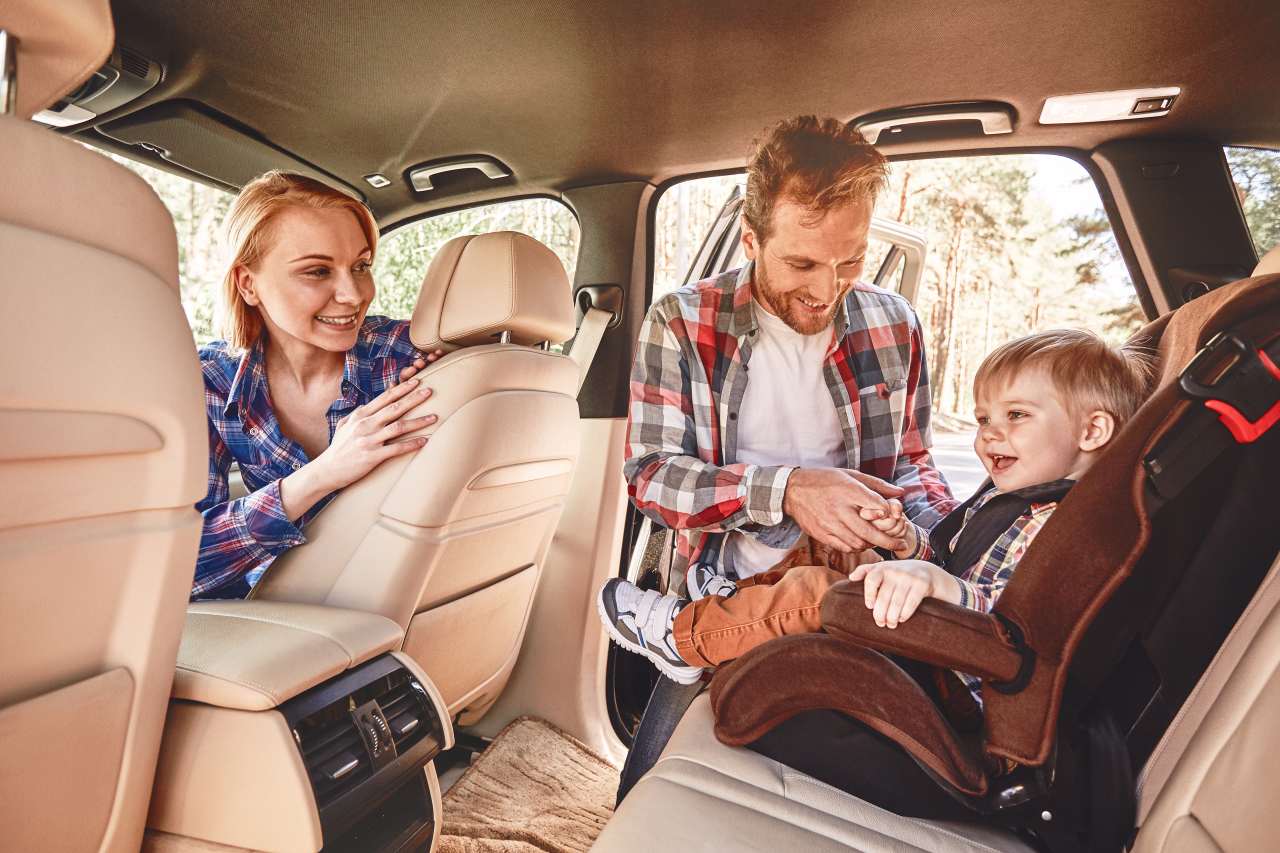

.jpg)
.jpg)
.jpg)
.jpg)
.jpg)
.jpg)
.jpg)
.jpg)
.jpg)
.jpg)
.jpg)
.jpg)
.jpg)
.jpg)
.jpg)
.jpg)
.jpg)
.jpg)
.jpg)
.jpg)
.jpg)
.jpg)
.jpg)
.jpg)
.jpg)
.jpg)
.jpg)
.jpg)
.jpg)
.jpg)
.jpg)
.jpg)
.jpg)
.jpg)
.jpg)
.jpg)
.jpg)
.jpg)
.jpg)
.jpg)
.jpg)
.jpg)
.jpg)
.jpg)
.jpg)
.jpg)
.jpg)
.jpg)
.jpg)
.jpg)
.jpg)
.jpg)
.jpg)
.jpg)
.jpg)
.jpg)
.jpg)
.jpg)
.jpg)
.jpg)
.jpg)
.jpg)
.jpg)
.jpg)
.jpg)
.jpg)
.jpg)
.jpg)
.jpg)
.jpg)
.jpg)
.jpg)
.jpg)
.jpg)
.jpg)
.jpg)
.jpg)
.jpg)
.jpg)
.jpg)
.jpg)
.jpg)
.jpg)
.jpg)
.jpg)
.jpg)
.jpg)
.jpg)
.jpg)
.jpg)
.jpg)
.jpg)
.jpg)
.jpg)
.jpg)
.jpg)
.jpg)
.jpg)
.jpg)
.jpg)
.jpg)
.jpg)
.jpg)
.jpg)
.jpg)
.jpg)
.jpg)
.jpg)
.jpg)
.jpg)
.jpg)
.jpg)
.jpg)
.jpg)


















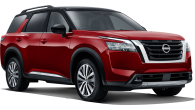







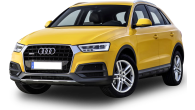
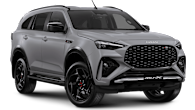



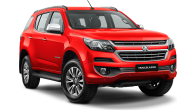


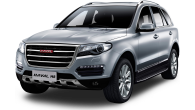




.png)

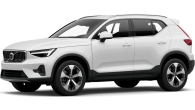


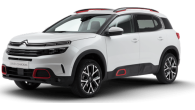



.png)


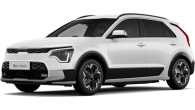
_0.jpg)
.jpg)
.jpg)



